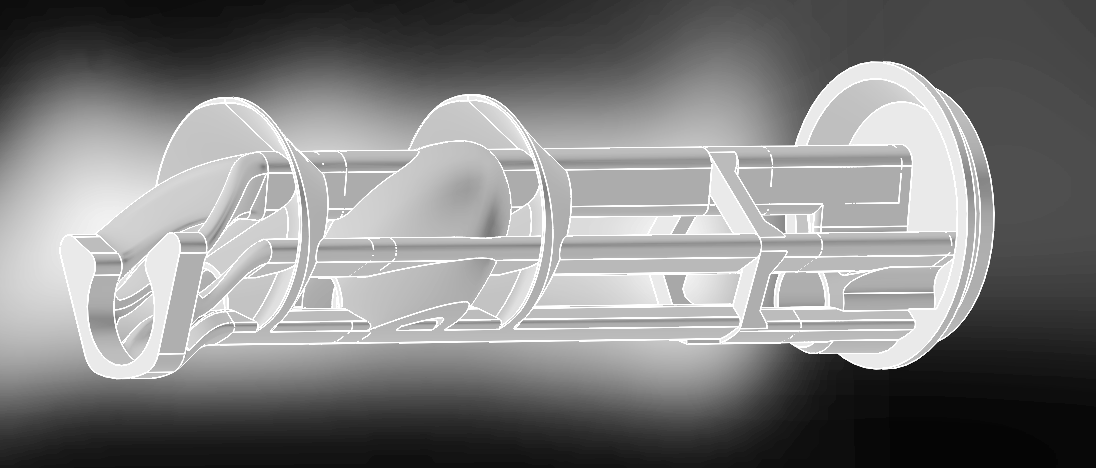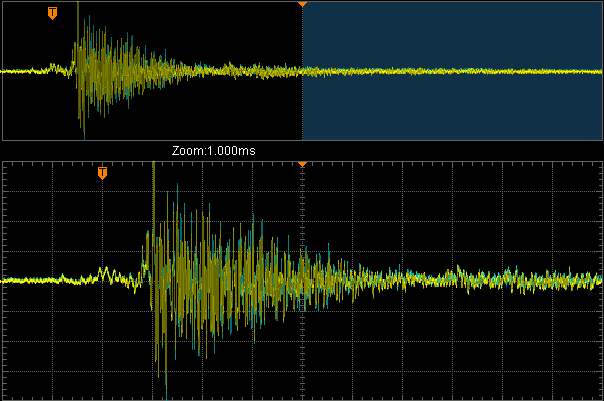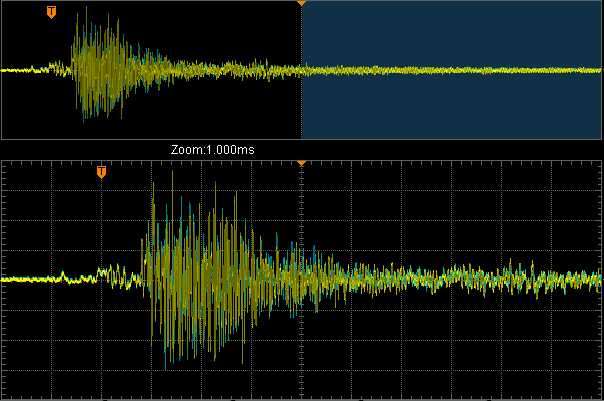Airgun Moderator Design, Performance, and Development - The Edgun Leshiy (part 6)
Silent Thunder Ordnance
The Edgun Leshiy, another one of those legendary airguns, an all time great. It is hard to say why exactly so many people are drawn to this bizarre little gun, however my hypothesis is that we all are attracted by what I’ll call purity of purpose. There is no fat on the Leshiy, it is all lean sinew and muscle, built for one and only one purpose: to be the most compact full power airgun possible.
Before going any further, I want to put out an IMMENSE thanks to a forum user who goes by the handle Custard. He is an immensely trusting and generous gentleman to ship his Leshiy across the country to a total stranger, a stranger who is clearly missing a few marbles I might add, for the purposes of experimenting with moderator design. I, for my own part, wanted to experiment with eccentric-bore moderator design, and the Leshiy looked like the ideal platform on which to do it. So in that regard we are a match for each other it would seem.
For those who’ve never handled a Leshiy, I would say it is a frightful little gremlin. Its compact size and light weight belie the fact that its discharge is both loud and comparatively violent. I regularly shoot high power precision rifles, and handguns, but somehow it is the Leshiy that makes me flinch when it goes off. Part of this is certainly the fact that it packs the power of a full sized rifle into something smaller than a suppressed center-fire handgun. (this Leshiy chronos at 740fps w/ a JSB 18.13gr .22 caliber pellet, or 22 foot pounds using the 250mm barrel. I have no idea if this is typical or not, as the US Edgun distributor doesn’t provide performance figures on their website at the time of writing.) I think part of it though is that the hammer is right there by your nose, and the cylinder against which your cheek rest surely must oscillate with the violence of each discharge. Either way, this gave me a real concern that, muzzled or not, I’d never get the Leshiy properly quiet simply for the noise of the action. Of course what hubris to think the only thing stopping me would be action noise eh? This is what your least favorite English teacher, who has already read the book, would call “foreshadowing.”
In a way, this project is two new and unique challenges rolled into one. The first is obvious, the highly eccentric bore provides a real challenge to moderator design. and when I say highly, I mean HIGHLY eccentric. There really is not much room between the bottom of the shroud and where that pellet passes. This means in one direction you have little room for air to expand and a lot of potential for turbulence to disrupt the pellet. In the other direction though you have lots of room, potentially too much room, and so you have the challenge of getting the air as quickly and efficiently as possible to the far side of the tube. The second challenge is that, in a way, this gun is like a scaled down big-bore. It sounds silly but bear with me: there is a huge amount of waste air generated, and you have very very little space with which to dampen it. There is no reflex volume or anything else to lean on. Okay, fine, there technically is some reflex volume to play with if you use the 350mm barrel and shroud extension, but this is not to be the test configuration, and I only have it on hand to confirm compatibility. The point though is that the ratio of flow-delaying to sound damping is necessarily shifted from the moderator you’d stick on the end of a “typical” airgun. Remember this gun generates almost as much power as a full sized airgun with half the barrel length.
Leshiy Stock Core - 279
The stock Leshiy moderator is a fairly conventional design from the firearm industry, one which relies on cross-jetting in order to function. Given the air-blast we’re dealing with here, it is difficult to say how effective such a design could be, but I have a hard time imagining it is highly effective. As I said, such a design leans on cross-jetting in order to function efficiently, however in this case the angled baffles are both dished and in opposing directions, both of which should limit the design’s efficacy. Furthermore, were it to provide a substantial amount of cross-jetting, it would destabilize the delicate Diabolo pellets we use, so again I can’t imagine it to be that effective.
So 279 is loud, considerably loud. By comparison on the same day at the same distance and same everything an FX Crown with its shroud extended and no moderator, which I consider unacceptably loud, metered at 254. And that Crown is a LOT further away from your face when it goes off. So yeah, the Leshiy is loud. I will be curious to see how much I can muzzle it.
So what have I come up with to test? Well given that this is round one, the answer is a whole bunch of different things. The purpose of all this is a “scattergun” approach, where you try a bunch of different things and see what seems to work best. From there you have what you need to begin optimizing with purpose, rather than randomly. I will provide a brief overview of the philosophy of each design as well as a rendering below. But there is another catch. I do have an indoor anechoic chamber I set up a couple testing cycles ago to work on the Crown. This is where I like to do optimizing as I can rapid-prototype a design and then quickly test it, and then further tweak the design. The speed of this feedback loop was critical to the rapid design improvement seen in the design which ultimately came to be known as the Levitas. The probem? The action on the Leshiy is so noisy that the not-really-anechoic chamber doesn’t produce good data, it produces garbage. Say bye bye to the rapid iteration process. :(
A note on the subjective ear here: on this test day my overwhelming impression of the Leshiy was “loud.” Some cores sounded quieter than others, but thanks to both their loudness and the overall volume of tests being performed (many not on the Leshiy) the only subjective impression I can walk away with is that, while some were quieter than others, all of them were too loud for my inclinations. Again the Leshiy was considerably louder than a Crown with no moderator, just its stock shroud, and I started this whole crazy project because I didn’t like how loud the Crown was.
And there is another thing: I generally use a rubber damper with cores, as in other platforms it has very well proven efficacy. Unfortunately it does eat some volume. On a lark I decided to do one core test which was otherwise identical but omitted the rubber damper, basically an apples to apples comparison of “does this work.” As it turns out, that was the only core which metered quieter than the stock Leshiy core, definitively answering the question of whether or not the rubber damper belongs in this design. It doesn’t nullify the relative performance of the other cores, they can still be compared to each other, however it does explain why they were all louder than stock.
Single Diode - 382
So lets get the obvious out of the way, this is an attempt at an adaptation of the Levitas to the Leshiy. There is an offset blast baffle followed by an eccentric gas diode followed by a skeletal structure to which sound damping material is attached. I’ll be curious to see if it beats the stock moderator, however in this application it almost certainly will not do well compared to the other designs. Why do I say that? The Levitas was optimized on a gun which produces only 1/3rd more power but does it using a barrel which is twice the length, and with the benefit of a shroud’s worth of reflex volume which is considerable. This means the ratio of flow-delaying to sound damping is not even close to proportionate for this design. Never the less it will be interesting to see. Another point of concern here is the fact that the diode really doesn’t actually have much area to operate, and so there is a real possibility it just won’t act like a diode in this form factor.
In short, this didn’t work, clearly. I’m not sure I was expecting it too, but this is why we test things right?
Worth noting are some general characteristics you’ll see repeated over and over again as they’re specific to this application. Visible at the left is the part which grips and justifies the rear of the core around the barrel. Minimalism is the name of the game here, anything that isn’t working is just wasted volume, so cut it out eh? Longitudinally there are struts to maintain the core’s structure. These maintain strength and alignment while helping to disrupt pressure waves in the shroud. I believe they’re a better design option than doing a full tube enclosure design, all else being equal.
Double Diode - 324
The gas diodes, particularly the eccentric ones, are big. No two ways about it. If they work at all though, in this application two may be better than one? Anyway that was the hypothesis of this core. Again I have no idea if this eccentric of a bore will allow the diode to function at all, so this may be a total flop, but it is worth a shot anyway.
So this clearly worked better than the single diode, and actually was the third best experimental core. However in this application the diodes simply take up too much space and are not as efficient probably because of their eccentric design. It is possible this can be adapted to work better, but for the time being it is being abandoned.
Conical three baffles - 315
The conical baffle is as old as calling them “silencers,” dating all the way back to Hiram Percy Maxim and the first ever commercial silencer. They’ve been working well for over 100 years, why dismiss them now? This uses three reasonably spaced offset conical baffles while still allowing room for sound damping at the terminal end of the core.
This was the best test which had the rubber damper, and designs will likely evolve outward from here. Clearly a combination of flow delaying and sound damping are desirable, even in systems as space-constrained as this. Had I tested this without the rubber damper, my expectation is that it would have been solidly the best performer here.
Four Conical - 357.5
Four Conical NR - 232
This is another design split, asking the question about ratio of flow delay vs. sound damping. This is also the core of which I did the with and without rubber comparison test on. I don’t expect the no-rubber variant to perform well, but it is always worth double checking your assumptions.
The results are stark. While the four conical baffle design was kind of in the middle of the pack, performance-wise, the sans-rubber variant was a runaway leader, beating all the other designs including the factory Leshiy core by a comfortable margin. That is quite an accomplishment given how mediocre this core is compared to the other architectures tested here. Clearly there is a great deal of latent potential to unlock. And that is good, because this test was only slightly quieter than an FX Crown with the factory shroud extended. (that meters 254, also with sustained noise)
Six Conical Baffles - 419
And the ultimate expression of flow-delaying, as that is pretty much all this design is. 6 unequally spaced conical baffles. If you recall, all the way back at my earliest tests, this design language worked very poorly on the Crown. Hell, it worked very poorly in the big test, just look at how the small Wolf Airguns? moderator performed. But this is not that, so as with all things you turn the dial past where it should be to better know where the happy medium is. I’m writing this before having tested it, however I’m fully prepared to eat my hat if this design is best.
Thankfully, my hat remains safe….. at least for the time being. This was in fact the loudest design tested this day. So there is the answer to the question nobody was asking: what does too many baffles look like?
As always, developing airgun moderators is a humbling learning experience as you’re just never sure what will work best, and usually when you are sure that simply means you’re wrong. Iterating and testing is the only way to reliably evolve the designs I am aware of, and thankfully that is exactly what is going to happen. Now that the big questions have been answered, the focus will predominantly shift to the small tweaks which can make such a big difference. I’ll be back with another round of testing, hopefully in a couple weeks.














